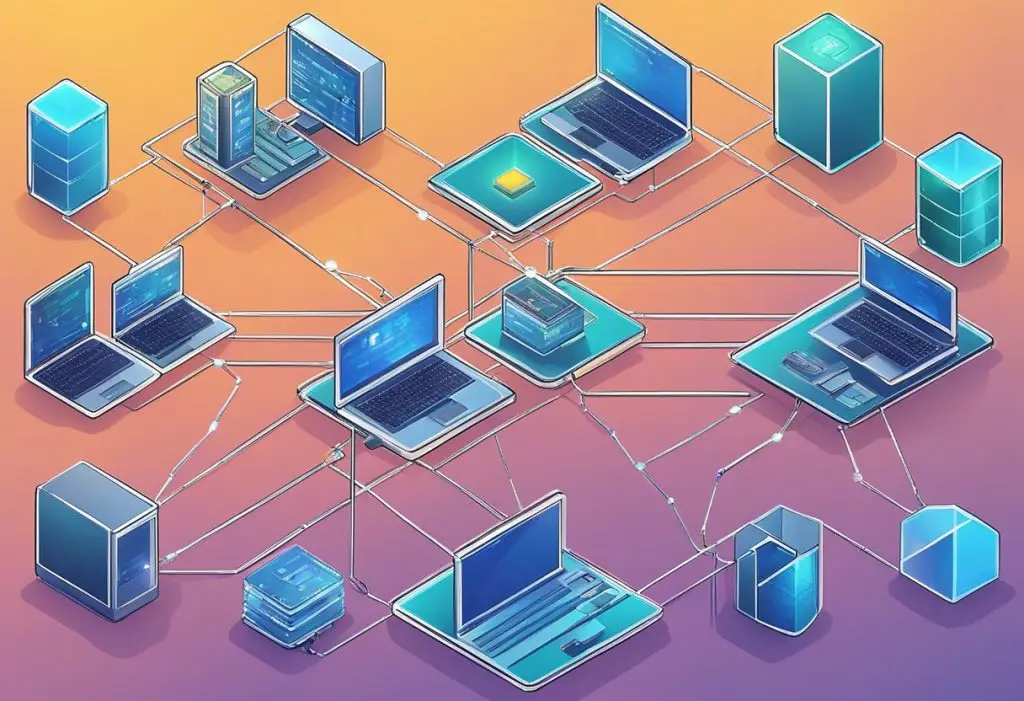Table of Contents
Introduction to Blockchain Nodes and Networks
Blockchain Nodes and Networks: Blockchain technology has become increasingly popular in recent years for its ability to provide secure and transparent transactions. At the heart of this technology are blockchain nodes, which play a critical role in ensuring the security and integrity of the blockchain network.
In a decentralized blockchain network, there is no central authority that oversees the network. Instead, nodes work together to form the governing infrastructure of the network. Each node in the network has a copy of the blockchain ledger and is responsible for validating transactions, adding new blocks to the chain, and ensuring the overall security of the network.
Understanding the role of blockchain nodes is crucial in understanding how the technology works. As the technology continues to evolve, it is important to stay up-to-date on the latest developments and applications of blockchain networks.
Key Takeaways for Blockchain Nodes and Networks
- Blockchain nodes play a critical role in ensuring the security and integrity of the blockchain network by validating transactions, adding new blocks to the chain, and ensuring the overall security of the network.
- In a decentralized blockchain network, there is no central authority that oversees the network. Instead, nodes work together to form the governing infrastructure of the network.
- As the technology continues to evolve, it is important to stay up-to-date on the latest developments and applications of blockchain networks.
Blockchain Fundamentals

Blockchain Nodes and Networks Image 1
Blockchain technology is a distributed ledger technology that is used to record transactions and store data in a secure and transparent manner. It is based on a decentralized architecture that eliminates the need for a central authority to manage and validate transactions. The core of blockchain technology is a network of nodes that work together to maintain a shared ledger.
Architecture and Types
Blockchain networks can be classified into two main types: public and private. Public blockchains are open to anyone, and anyone can participate in the network as a node. Private blockchains, on the other hand, are restricted to a specific group of participants who are authorized to access the network.
The architecture of a blockchain network is based on a peer-to-peer (P2P) network, where each node in the network has equal rights and responsibilities. Each node maintains a copy of the ledger and participates in the validation of transactions.
Decentralization and Centralization
Decentralization is a key feature of blockchain technology. In a decentralized network, there is no central authority that controls the network. Instead, the network is managed by a group of nodes that work together to maintain the integrity of the ledger.
Centralization, on the other hand, refers to a network that is controlled by a single entity or a group of entities. In a centralized network, the control of the network is concentrated in the hands of a few individuals or organizations.
Consensus Mechanisms
Consensus is the process by which nodes in a blockchain network agree on the validity of transactions and the state of the ledger. There are several consensus mechanisms that can be used in a blockchain network, including proof of work (PoW), proof of stake (PoS), and delegated proof of stake (DPoS).
PoW is the most widely used consensus mechanism in blockchain networks, including Bitcoin and Ethereum. PoS is an alternative consensus mechanism that is used in networks such as Cardano and Polkadot. DPoS is used in networks such as EOS and Tron.
In conclusion, blockchain technology is a decentralized ledger technology that is based on a network of nodes that work together to maintain a shared ledger. The architecture of a blockchain network can be public or private, and the consensus mechanism used to validate transactions can vary depending on the network. Decentralization is a key feature of blockchain technology, and it eliminates the need for a central authority to manage and validate transactions.
Nodes and Network Roles
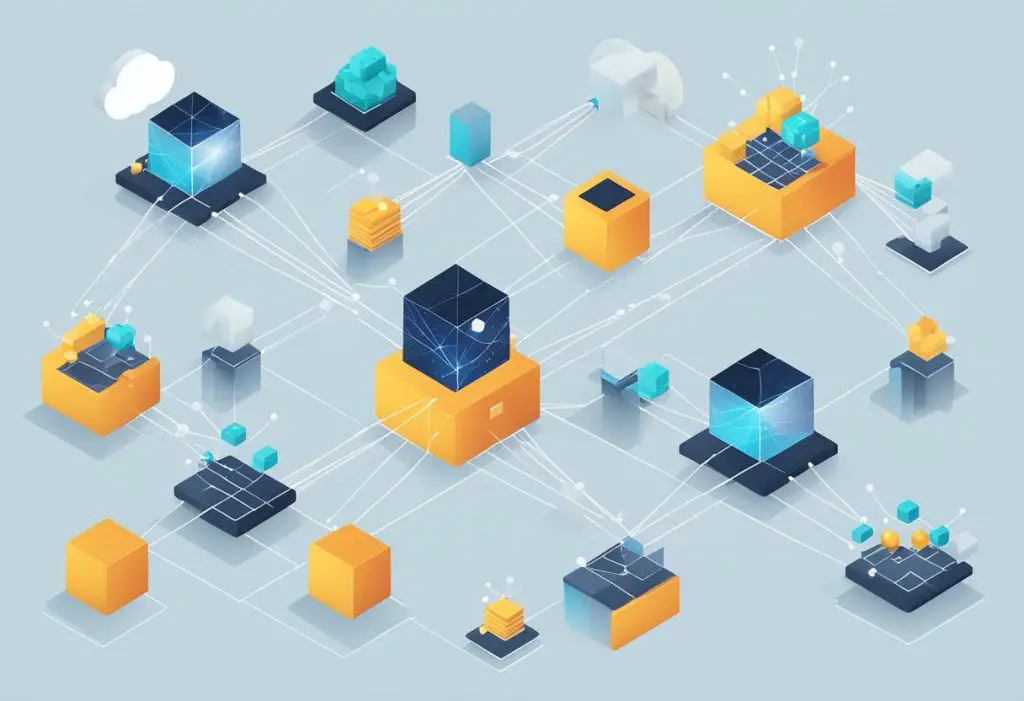
Blockchain Nodes and Networks Image 2
Blockchain networks are composed of nodes that play different roles in maintaining the network. These nodes are responsible for validating transactions, adding new blocks to the chain, and maintaining the integrity of the network. There are different types of nodes, each with specific roles and responsibilities.
Full Nodes and Light Nodes
Full nodes are the backbone of the blockchain network. They store a complete copy of the blockchain ledger and verify all transactions that occur on the network. Full nodes are essential for maintaining the integrity of the blockchain, as they ensure that all transactions are valid and that the network is secure.
Light nodes, on the other hand, do not store a complete copy of the blockchain. They only store a subset of the data, making them less resource-intensive than full nodes. Light nodes rely on full nodes to verify transactions and maintain the network’s integrity.
Miners and Mining Nodes
Miners are nodes that are responsible for adding new blocks to the blockchain. They use specialized hardware and software to solve complex mathematical problems, which allows them to add new blocks to the chain. Mining nodes are the nodes that participate in the mining process. They work together to solve the mathematical problems and add new blocks to the blockchain.
Validators and Governance
Validators are nodes that are responsible for validating transactions on the network. They ensure that all transactions are valid and that the network is secure. Validators play a crucial role in maintaining the integrity of the blockchain, as they prevent fraudulent transactions from being added to the chain. Governance nodes are responsible for making decisions about the network’s future, such as changes to the network’s rules or protocol.
In summary, blockchain networks are composed of different types of nodes that play different roles in maintaining the network. Full nodes are responsible for storing a complete copy of the blockchain and verifying all transactions that occur on the network. Light nodes are less resource-intensive and rely on full nodes to maintain the network’s integrity. Miners are responsible for adding new blocks to the blockchain, while validators ensure that all transactions are valid and prevent fraudulent transactions from being added to the chain. Governance nodes make decisions about the network’s future, such as changes to the network’s rules or protocol.
Blockchain Security and Integrity
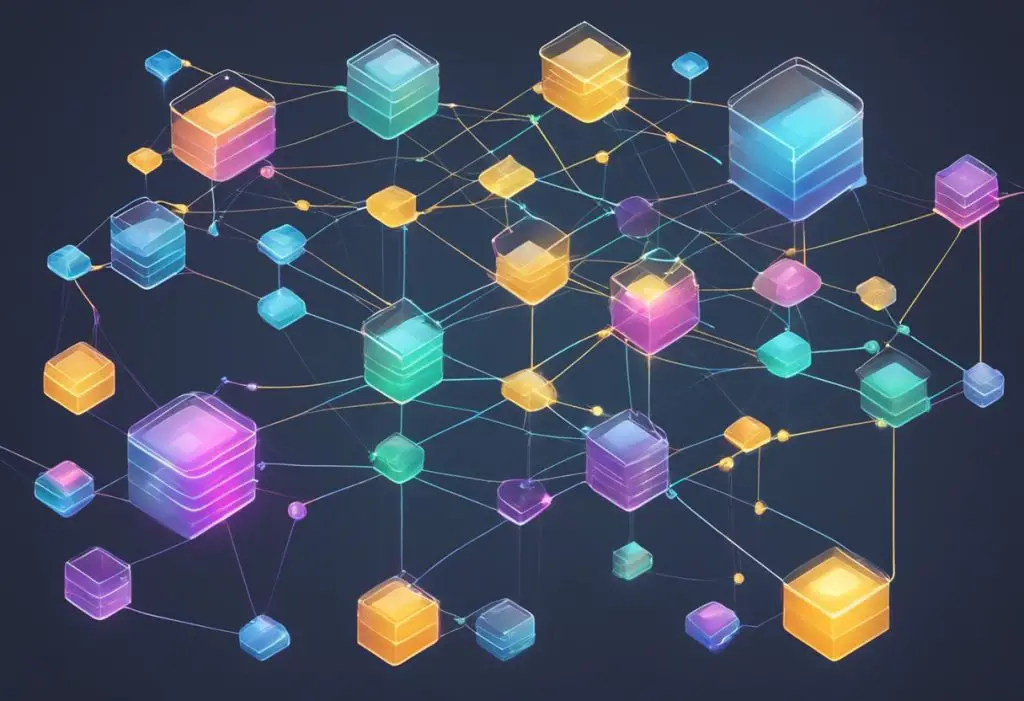
Blockchain Nodes and Networks Image 3
Blockchain technology is known for its secure and immutable ledger, which ensures that the data stored on it is tamper-proof and transparent. The security and integrity of the blockchain network are maintained through various measures, including cryptography, consensus mechanisms, and network protocols.
Cryptography in Blockchain
Cryptography is an essential component of blockchain technology, as it ensures that the data stored on the blockchain is encrypted and secure. The data is encrypted using a cryptographic puzzle, which is solved by the miners in the network. Once the puzzle is solved, the block is added to the blockchain, and the data becomes immutable.
Security Measures
The security of the blockchain network is maintained through various measures, including network protocols and consensus mechanisms. The network protocols ensure that the data is transmitted securely across the network, while the consensus mechanisms ensure that the data is verified and validated by the nodes in the network.
Maintaining Data Integrity
The integrity of the blockchain network is maintained through the use of an immutable ledger, which ensures that the data stored on the blockchain is tamper-proof. The data is stored in blocks, and each block contains a unique hash that is used to identify it. Once the block is added to the blockchain, it cannot be modified or deleted, ensuring that the data is secure and transparent.
In conclusion, blockchain technology is known for its secure and immutable ledger, which ensures that the data stored on it is tamper-proof and transparent. The security and integrity of the blockchain network are maintained through various measures, including cryptography, consensus mechanisms, and network protocols.
Applications and Implications
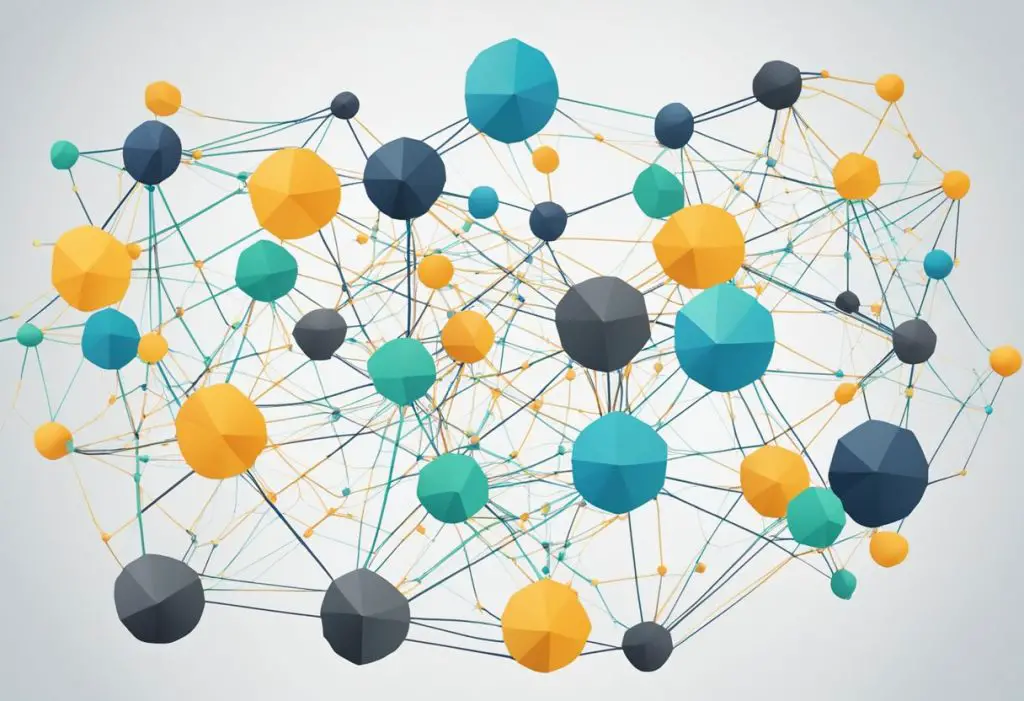
Blockchain Nodes and Networks Image 4
Smart Contracts and DApps
Blockchain nodes play a crucial role in the successful implementation of smart contracts and decentralized applications (DApps). Smart contracts are self-executing contracts with the terms of the agreement between buyer and seller being directly written into lines of code. They are stored on the blockchain network and automatically execute when predetermined conditions are met. Blockchain nodes validate the transactions and ensure that the smart contract is executed correctly. DApps are also built on top of blockchain networks and rely on nodes to function. These decentralized applications have the potential to disrupt industries such as finance, supply chain, and healthcare.
Cryptocurrencies and Tokens
Blockchain nodes also play a vital role in the creation and transfer of cryptocurrencies and tokens. Cryptocurrencies like Bitcoin and Ethereum are digital assets that are verified and transferred using blockchain technology. Blockchain nodes validate transactions and ensure that the digital asset being transferred is legitimate. Tokens are digital assets that represent a unit of value or asset and can be used for a variety of purposes such as fundraising or loyalty programs. Nodes ensure that token transactions are accurate and secure.
Blockchain in Industry
Blockchain technology has the potential to revolutionize industries such as supply chain and business networks. By using blockchain networks, businesses can create a tamper-proof and transparent record of their transactions and assets. This can help reduce fraud and increase efficiency. Blockchain nodes play a crucial role in ensuring the security and accuracy of these records.
In conclusion, blockchain nodes are an essential component of blockchain networks. They ensure that transactions are validated and executed correctly. The applications of blockchain technology are vast and have the potential to disrupt industries such as finance, supply chain, and healthcare. By using blockchain networks, businesses can create a tamper-proof and transparent record of their transactions and assets.
Frequently Asked Questions
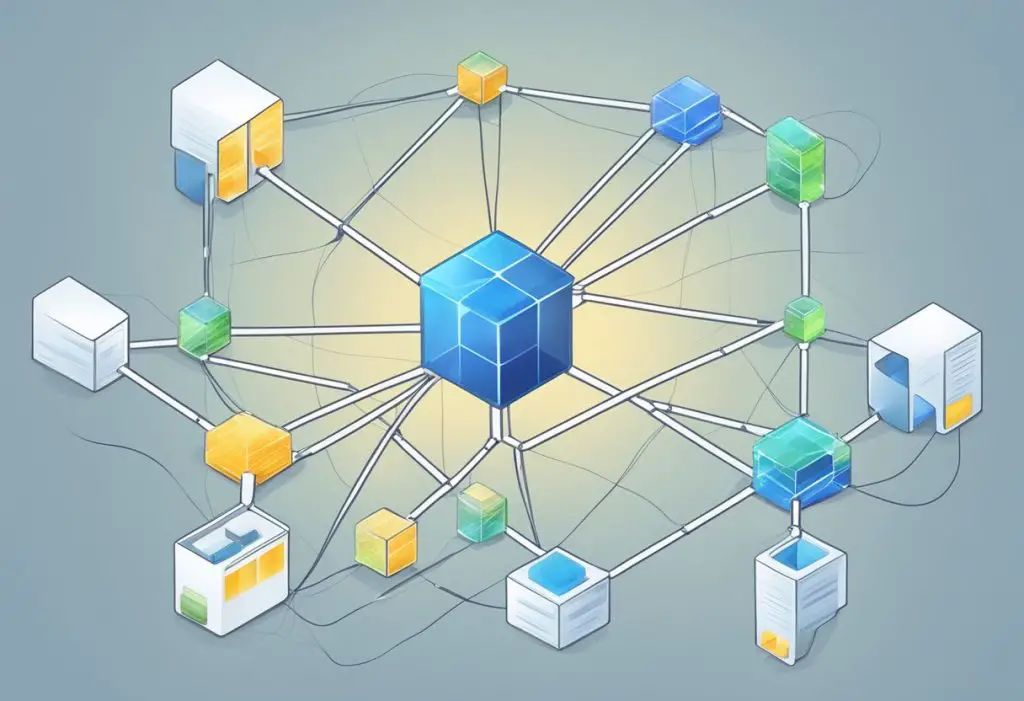
Blockchain Nodes and Networks Image 5
What roles do different types of nodes play in a blockchain network?
Different types of nodes play different roles in a blockchain network. For example, full nodes store a complete copy of the blockchain and validate all transactions. Light nodes, on the other hand, only store a portion of the blockchain and rely on other nodes to validate transactions. Mining nodes are responsible for creating new blocks in the blockchain and are rewarded for their efforts.
How do full nodes contribute to the blockchain’s functionality?
Full nodes are crucial to the functionality of a blockchain network. They validate all transactions and ensure that the blockchain remains secure and accurate. Full nodes also help to maintain the decentralization of the network by preventing any one entity from controlling the majority of the network’s computing power.
Can participating in a blockchain network with a node yield financial rewards?
In some cases, participating in a blockchain network with a node can yield financial rewards. Mining nodes, for example, are rewarded with cryptocurrency for creating new blocks in the blockchain. However, not all nodes are rewarded in this way, and the amount of rewards can vary depending on the network and the node’s contribution.
What are the key differences between a node and a block within a blockchain?
Nodes and blocks are both important components of a blockchain network, but they serve different functions. Nodes validate transactions and help to maintain the network’s security, while blocks contain a collection of validated transactions and are added to the blockchain in a linear, chronological order.
How does the number of nodes affect the security and efficiency of a blockchain network?
The number of nodes in a blockchain network can affect both its security and efficiency. A larger number of nodes can increase the security of the network by preventing any one entity from controlling the majority of the computing power. However, a larger number of nodes can also decrease the efficiency of the network by increasing the time it takes to validate transactions.
What are the main categories of blockchain networks, and how do they differ?
There are several main categories of blockchain networks, including public, private, and consortium networks. Public networks are open to anyone and are typically decentralized, while private networks are restricted to a specific group of users and are often centralized. Consortium networks are a hybrid of the two, with a group of organizations working together to maintain the network.
